This post may contain affiliate links. Please see our disclosure policy for more details.
Help! My toddler only wants to snack all day long and refuses to eat meals! Here are some effective strategies for ending mealtime battles and raising healthy kids.
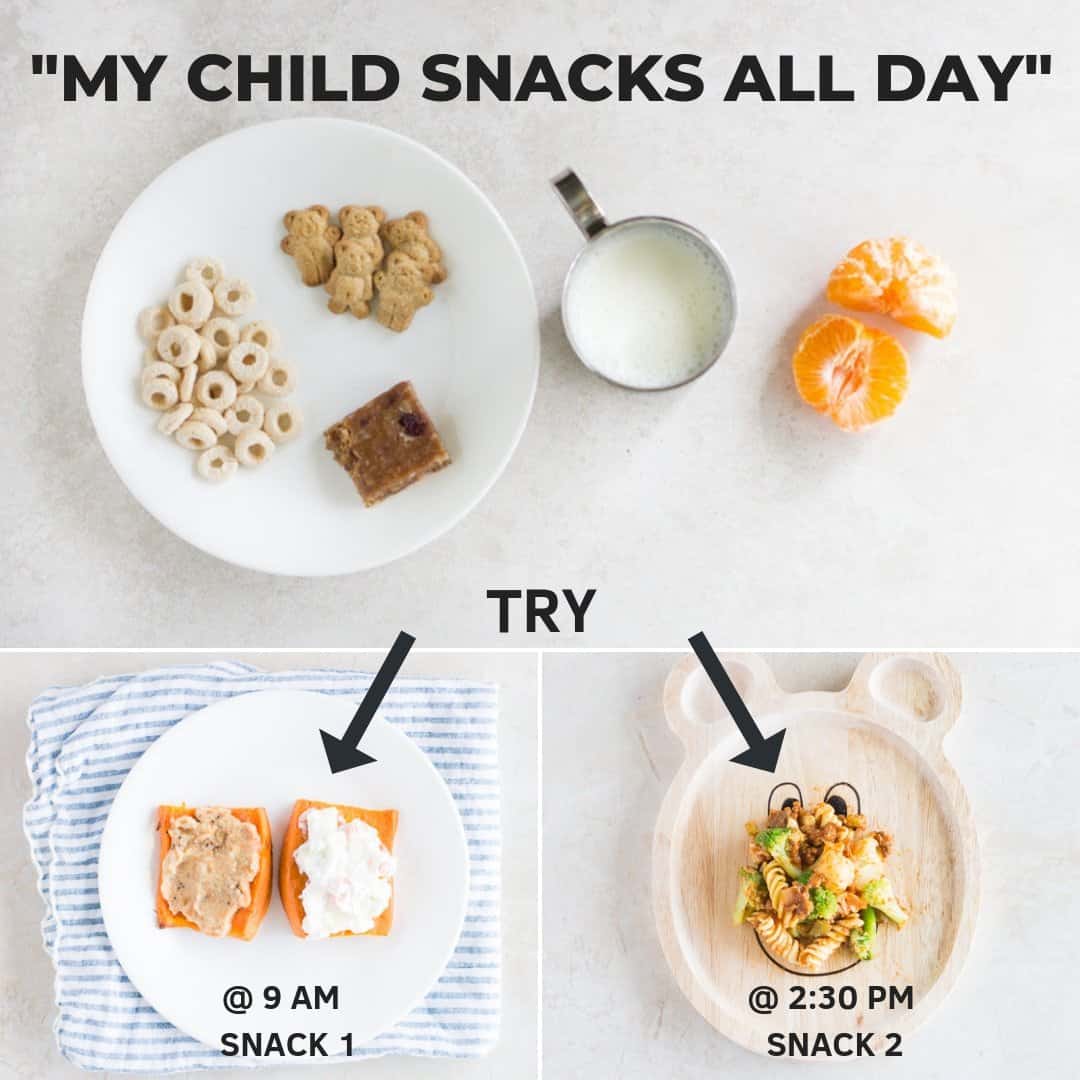
Table of Contents
Constant Toddler Snacking
Snacks can absolutely (and should) be a healthy part of a child’s diet. Their small stomachs coupled with their high-energy mean they need to be eating often.
However, snacking all day long will not only ruin their mealtime appetites but start a vicious cycle and unhealthy habits that can be hard to break the longer they go on.
Listed below are the top reasons why you may be finding it difficult to break out of the constant grazing and what you can do to make the necessary shift toward structured eating.
Toddler not eating their meals
And so you find yourself offering snacks throughout the day because you’re worried they won’t get the nutrition they need to grow and thrive.
Totally understandable, especially if your child is underweight.
However, grazing all day long may be one of the main reasons why your child isn’t eating during mealtimes. And for fussy eaters, this can make things worse.
If they don’t come to the table hungry, they’re less likely to try new/disliked foods or any food for that matter.
All this to say, unstructured snacking can lead to mealtime battles, picky eating, and poor nutrition.

Is your toddler becoming picky?
Arm yourself with these strategies that will transform your mealtimes!
What to do:
I know as parents, we want our kids to be fed. And fed well! But here’s a gentle yet powerful reminder. It’s OK to let them get hungry! In fact, it’s encouraged. That will be an incredible driving force in encouraging them to eat a full, nutritious meal.
Schedule meals and snacks at regular intervals throughout the day.
And teach your child from early on that the kitchen is closed outside of those times. So next time you find yourself handing over a snack on demand, remember! You are in charge of WHAT and WHEN food will be served.
Most toddlers need to eat 3 meals plus 2-3 snacks spaced 2-3 hours apart (older children can go longer).
It’s so important to set an eating schedule that works best for your family and stay consistent. You can be flexible but don’t want to be too loose.
Also, remember that every child is different. My 4 year old son has never been much of a snacker and is perfectly fine with 3 meals and one snack. Yours might need one in between each meal. Find a feeding structure that works for you.
Here’s our past and current mealtime schedules to help get you started. Having a consistent and predictable eating schedule makes all the difference!
Children thrive on routine and predictability so let’s give it to them!
This is a common dilemma for many families. A lot of times what ends up happening is that parents will resort to offering different foods from what was initially served because they don’t want their child to go to bed hungry. I can totally relate!
However, toddlers catch on quick! They will learn that if they refuse their dinner, they will get what they want, and the cycle continues.
If your child is constantly refusing dinner, it may be helpful to incorporate into your routine a bedtime snack at least 30 minutes after. Here are some strategies and specific guidance on how to handle dinner refusal.
Snacks help avoid meltdowns
Your child may be chasing you around all day long demanding snacks out of boredom or as a way of dealing with various emotions like frustration and sadness.
And while it’s easy to give in so you can have some peace and quiet to yourself, it puts you in a position where your child is running the show.
Also, when food becomes a source of distraction, it can lead to mindless eating. Your child is not focusing on their food, which most likely will interfere with their innate ability to regulate food intake and discourage them from listening to their own hunger/fullness cues.
Your child may end up over or in some cases, under-eating.
What to do:
Consider your mealtime schedule and your child’s intake throughout the day. If it’s been over 2 hours and your child didn’t eat much during their previous mealtime, then they truly may be hungry. In this case offer a well-balanced snack.
Otherwise, gently but firmly remind your child that it’s not snack time and that they will get to eat soon. You can shift the focus by engaging them in other activities, like reading, going outside, etc.
Healthy Foods for 1 year Old and Beyond
Snacks are exciting
Kids typically prefer snacks over meals, and it gets even more exciting if they are used to getting the typical packaged “snack foods,” such as crackers, cookies, granola bars, etc.
So they start holding out for these snacks and not eating their meals.
It’s unrealistic to say no to serving these foods entirely, nor should you! It’s all about balance and moderation. Again, remember that you are in charge of WHAT and WHEN of feeding.
Related: How to handle sugar with toddlers and kids
What to do
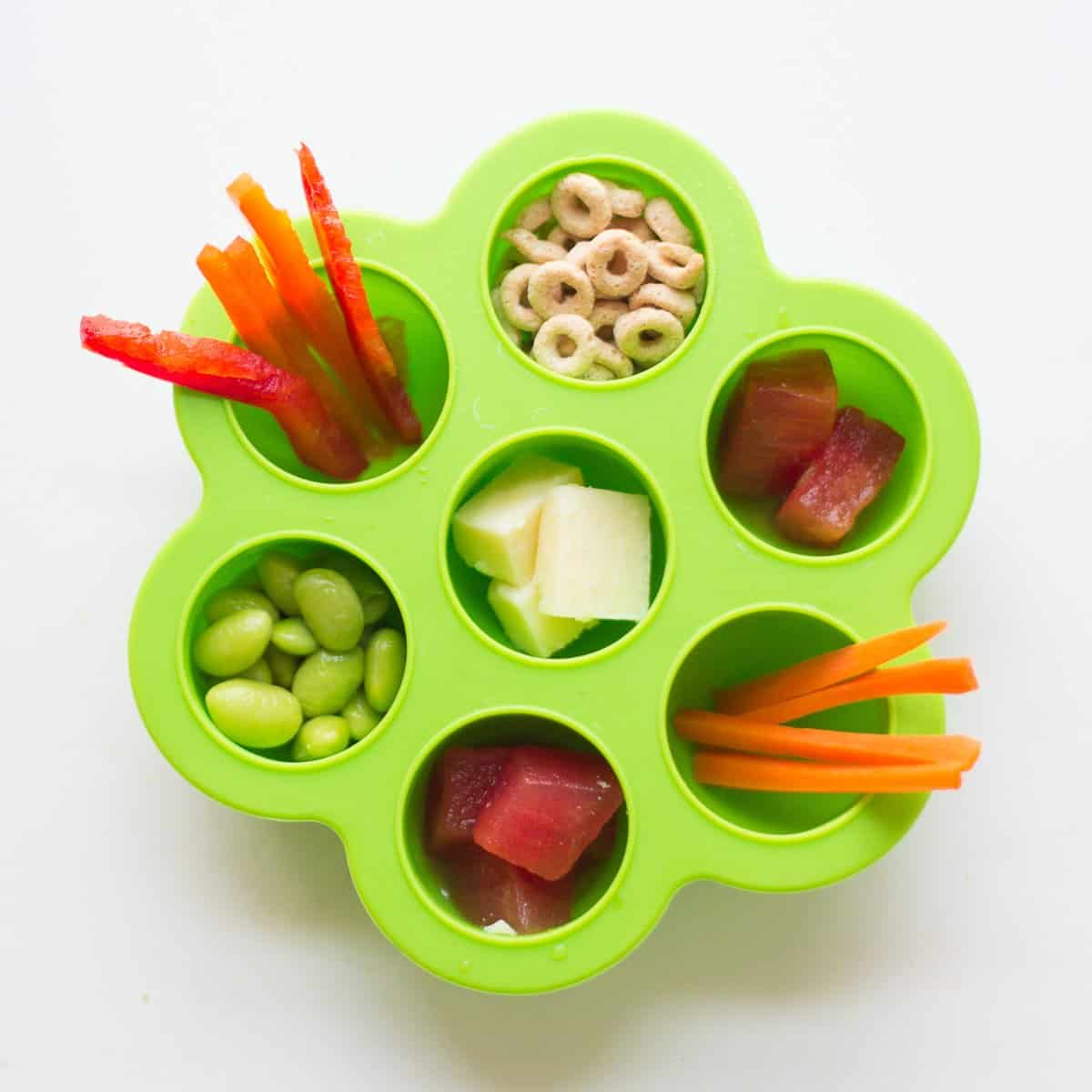
- Rethink snacks! Don’t let the crackers, cereals, etc. be the ONLY foods you serve. This will most likely lead to your child eating less of their meals to save room for these “special” foods. So Mix it up!
- Consider snacks as mini-meals. Aim to serve the same kinds of foods you’d serve at mealtimes, just in smaller portions. Be sure to check out these snack tray ideas for inspiration!
- Serve at least
2 food groups – protein/fat AND fruits/vegetables/whole grains. This will help keep your child fuller and more satisfied until the next meal time.
Master List of Healthy Snacks for Toddlers
Snacking on the go
Following a mealtime schedule and having structure may be very challenging if you are on the go all the time. So you abandon it altogether.
This may be an easier solution in the moment, but in the long run, it will make it much more difficult to establish good eating habits.
Not to mention, eating whenever and wherever will inevitably send the message to your child that sitting down and eating together is not important.
Best Store-Bought Snacks for Kids
What to do:
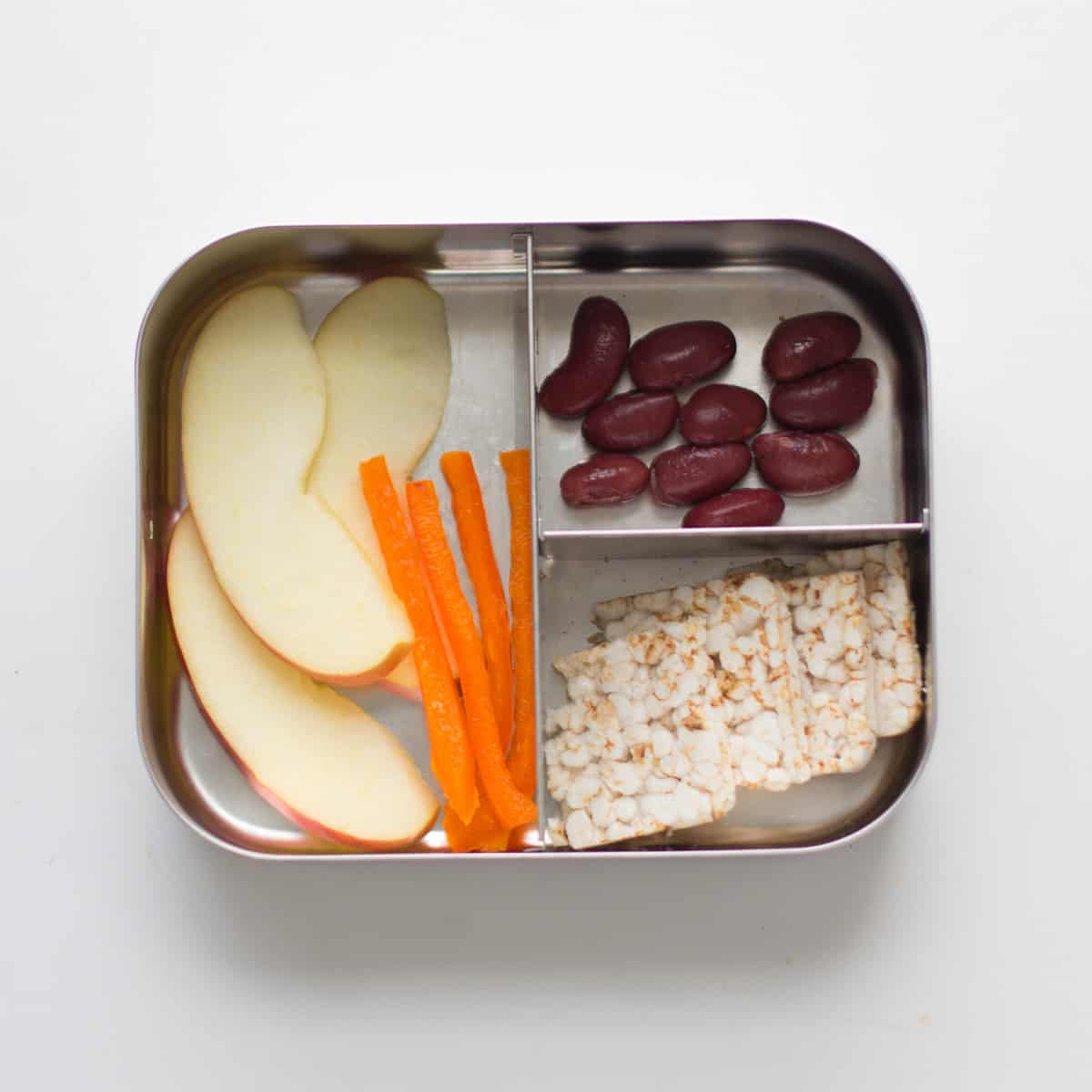
This is when time management becomes really important.
- Prioritize your eating schedule. Again, you don’t have to be super strict with it. Allow wiggle room and try to keep meals/snacks within a 30-minute time frame around the usual time.
- Do not offer snacks in the car seat, stroller, etc. Try your best to put a pause in
action to sit down and enjoy a snack together. - And if you’re so busy that you can’t stop to make this happen, perhaps it’s time for you to re-evaluate your routine. Don’t be afraid to make changes to your mealtime schedule. For instance, perhaps moving up your dinner time and adding a bedtime snack may work better for your child and family.
- Don’t overpack. Instead of turning your bag into a portable snack drawer, only carry 1-2 emergency snacks in your bag so you are not tempted to hand them snacks when things go south.
Also check out: On-the-go or travel snacks
Easy Snack Ideas for Toddlers
Here are actual examples of what I served to my children. When I am putting together snacks, I consider:
- What leftovers can I repurpose?
- Is there some type of protein and or fat?
- Is there a snack food that they seem to be fixated on? If so, let’s include it!
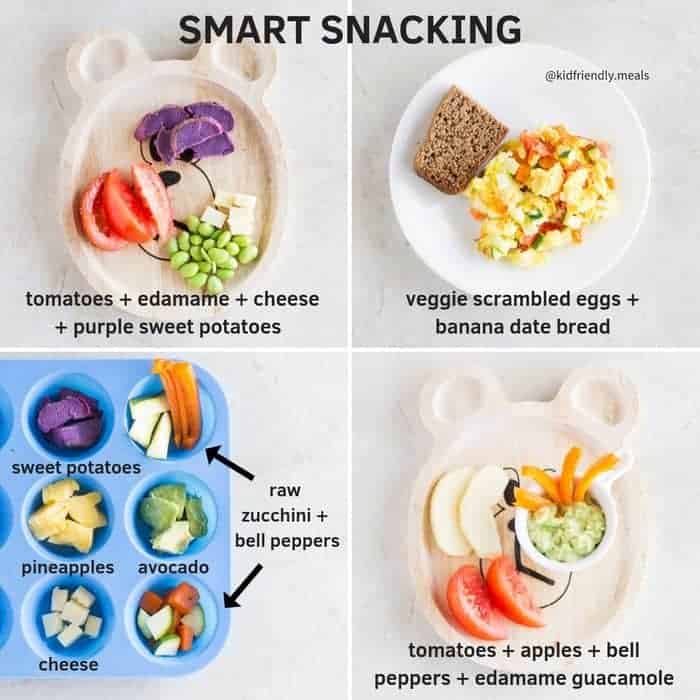
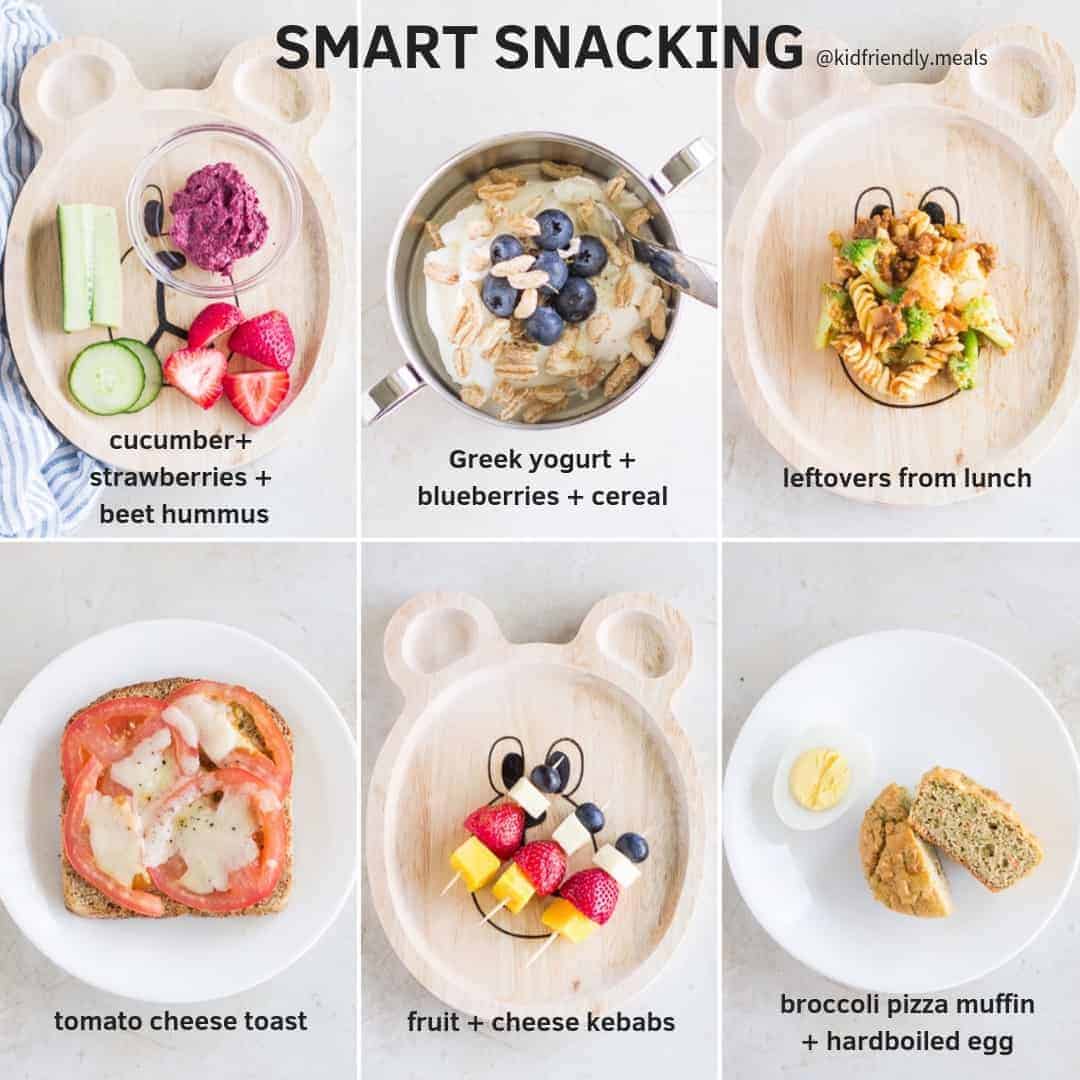
Specific ideas:
- Overnight oats or quinoa
- Yogurt parfait – with blueberries, grated carrots, and dried cereal
- Toasts – Go beyond peanut butter and jelly with these unique and easy topping suggestions.
- Sliced apples and cheese
- Hard-boiled egg with steam roasted veggies and cheese crackers
- Banana with peanut, nut, or seed butter
- beet hummus with red bell peppers, cucumber, and tortilla
- Cookie + milk or kefir
- Pancake sandwich + fruit
- Savory oatmeal with chopped zucchini and melted cheese
Whole grain crackers and carrots with hummus- Banana toppings bar or roll ups
- Graham crackers with strawberries and peanut butter
- A small portion of leftover dinner + chocolate
- Snack tray with an assortment of whatever you have on hand – cheese, veggies, fruit, avocado, beans, etc. It can be a random hodgepodge and your child will love it!
- Smoothies
- You can find a basic formula for making ANY veggie-loaded smoothies in my Veggie-Centered Delights cookbook
- Make it thicker and enjoy with a spoon – Carrot Cake Oatmeal smoothie bowl
- Green smoothies
Note: be sure to pay attention to drinks. Milk and fruit juices are very filling. If your child is thirsty between meals, offer water. Limit juice to 6 ounces/day and milk to 16 ounces/day.
More Snack Recipes for Toddlers
Here are some simple recipes you might be interested in making for your toddler and yourself!
Master List of Healthy baby and toddler muffins
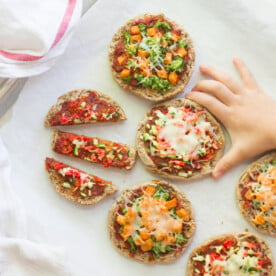
English muffin pizza (with vegetables)
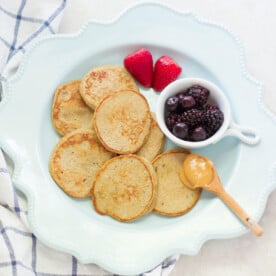
3 Ingredient Banana Oat Pancakes
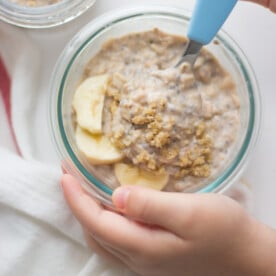
Banana Overnight Oats
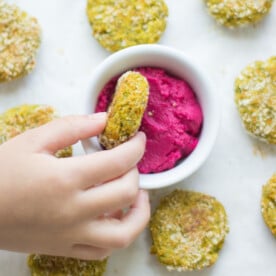
Baked Veggie Nuggets
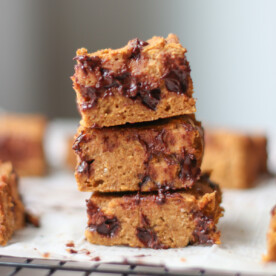
Healthy Pumpkin Oatmeal Bars
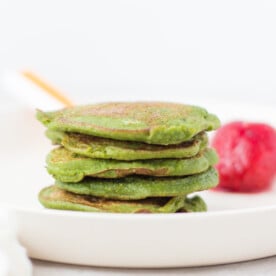
Spinach Pancakes
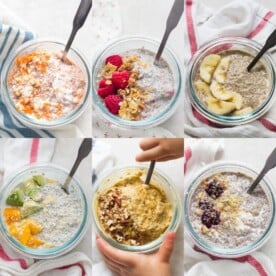
Single Serve Chia Puddings for Babies and Kids
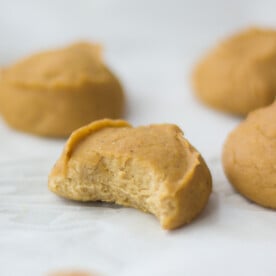
Peanut Butter Chickpea Cookies

Banana Sushi

Savory French toast
My 1st e-cookbook – Baby Led Weaning Beginner Bites – Introducing Top Allergen Foods – has a ton of finger-friendly, freezer-friendly veggie-forward recipes that your baby, toddlers, and older children will enjoy!

I truly hope this is helpful! Happy sancking 😉

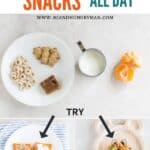


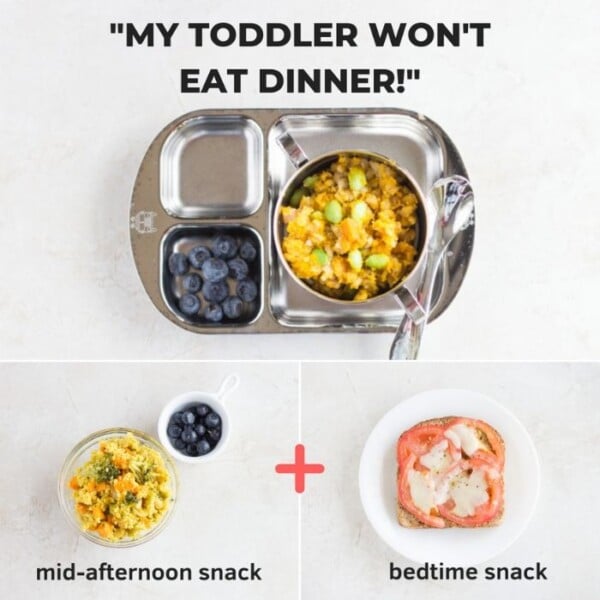
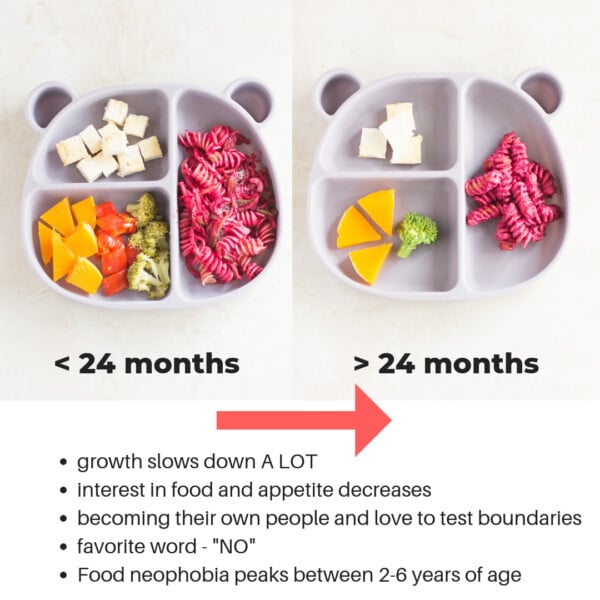









Your blog greatly influenced my decision on how I feed my child. As soon as he started daycare he was too tired and full from the day meals to eat dinner. So I started packing him our family dinner for his afternoon snack. It gives me peace of mind knowing he’s getting a variety of healthy food in his diet this way.
I also use to do the timed snacks but we’ve struggled so much with food. So when my baby wants to eat even if it means all morning long I do. But I do follow the rule of all snacks being very healthy or like mini meals. He’s also very tiny for his age so I follow his hunger cues.
Love that you are following his hunger cues. Have you read my “how to help your underweight child” post? If not, hope it will be helpful as well!
Going through this exact problem at the moment with my toddler so this is super helpful! Thank you!
I’m so glad that it’s helpful!! Hang in there mama!!
Loved this post ! Thank you for all the information and photos of what snacks look like
you’re very welcome! Glad you found this helpful! 😉